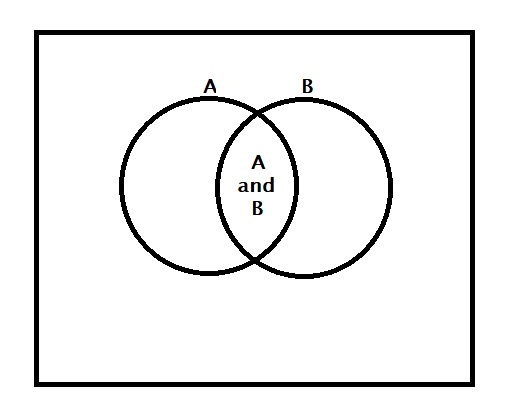Linda is 31 years old, single, outspoken, and very bright. She majored in philosophy. As a student, she was deeply concerned with issues of discrimination and social justice, and also participated in anti-nuclear demonstrations.
Tversky and Kahneman, Psycological Review (1983)
As part of their study, Tversky and Kahneman gave this problem to 142 UBC undergrads to determine which of the two alternative options was more probable.
- Linda is a bank teller.
- Linda is a bank teller and is active in the feminist movement.
What is your answer?
The AND rule
Remember the AND rule? You did not need my post to know the rule; we have accepted it happily at school. 1) it appeared logical. 2) since the probability values are always less than or equal to 1, a product of P(A) and some other probability can never be more than P(A) because that other shall always be one or less. 3) Our teacher explained it graphically using Venn diagrams.

None of us had issues with any of these.
Judgements rooted deep
Yet, 85% of the students selected the second option as the more probable!
Resemblance wins over Extensional
The scientists went to another group of students and asked to choose one statement from the following (far more explicit) options.
- Argument 1 Linda is more likely to be a bank teller than a feminist bank teller as every feminist bank teller is a bank teller and some bank tellers are not feminists.
- Argument 2 Linda is more likely to be a feminist bank teller than a bank teller because she resembles an active feminist more than she resembles a bank teller.
The students chose the second (65%) in the majority!
There are more examples of conjunction fallacy in our day-to-day lives. Who knows better to exploit this vulnerability of mind than your insurance agent, who can sell you the life insurance that covers deaths from terrorist attacks when you didn’t want to buy the normal one?
Interestingly, this fallacy is not restricted to stories that use rare but appealing words that trigger our imagination. Students were asked to bet on one of three sequences if a six-sided die, with four green faces and two red faces, is rolled 20 times.
1) RGRRR
2) GRGRRR
3) GRRRRR
Students overwhelmingly chose option 2, forgetting that option 1 is a subset of option 2!
Extensional versus intuitive reasoning: Tversky; Kahneman

